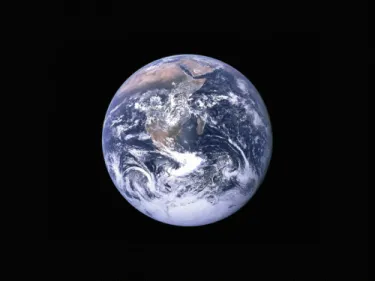New York Avenue Presbyterian Church hosts a talk on moral injury and climate change
Theologian and author Dr. Rita Nakashima Brock is McClendon Scholar-in-Residence

September 11, 2023

Dr. Rita Nakashima Brock, an acclaimed author and theologian and a senior vice president and director of the Shay Moral Injury Center at Volunteers of America, served this past summer as the McClendon Scholar-in-Residence at New York Avenue Presbyterian Church in Washington, D.C. She recently gave an online lecture, “Moral Injury and Climate Change: Reclaiming Our Love for This Earth.”
What people used to call “acts of God” — tornadoes, hurricanes, heat waves and the like — “we realize now human beings are part of the problem with these disasters,” Brock said. “What does that mean in terms of our moral responsibility, even though we aren’t individually causing these things? They are not acts of God. They are acts of climate change with human participation involved.”
Drawing on “Saving Paradise,” a book Brock and Rebecca Ann Parker published in 2008, Brock discussed stops she and Parker made across Europe trying in vain to find early images of the crucified Christ. Instead, during the first millennium following Christ’s crucifixion and resurrection, Christians filled their sanctuaries “with images of Christ as a living presence in a vibrant world,” according to the Good Reads description of “Saving Paradise.” It wasn’t until about 800 that imperial violence was sanctified in Western Europe.
After describing moral injury and its implications, Brock cited a piece she read in the medical journal Lancet that discussed climate change and the way many people are despairing about their future. The article suggested the appropriate term for how people are experiencing that is moral injury. “I found it interesting they used that term in a medical journal,” Brock said, “but I agree with that.”

She touched on the concept of our moral operating system, which “guides our perceptions, shapes our attention and evokes feelings that attach to memory. Mostly it operates without our thinking about it,” Brock said. “We only have to think about it when we don’t know what to do or we face something it can’t handle.”
“We cherish, protect and risk our lives for what we most love,” she said. “How do we have a theology that will deeply love the Earth?”
Brock showed viewers Christian art dating back to the fourth century CE. Death was often depicted “as the thin veil between this life and the next,” and resurrection as “opening the doors of paradise in this world,” Brock said. “You just need to figure out how to walk through the doors, and baptism is how you do it.”
The Eucharist was seen as “a feast of abundant life, hosted by the risen Christ.” St. Augustine claimed that “the whole Earth shares in the essential qualities of paradise.”
What happened to that life-affirming theology?

Charlemagne went on “a terror campaign” across southern Europe. Early in the second millennium after Christ, Archbishop Anselm wrote “When God Became Human,” the first book on the theology of crucifixion as salvation, arguing that “God’s goal was to die for human sin, a penalty that had to be paid and we were too bad to pay it. This is substitution atonement theology,” Brock said.
The presentation concluded with questions from Joshua Long, congregational organizer for Interfaith Power & Light’s Northern Virginia, Maryland and the District of Columbia affiliate.
Brock supports formation of a ClimateCorps, which would require a two-year commitment by young adults to work on Earth’s most pressing threat, climate change. “The way you stay morally resilient when you feel miserable about climate change is to be with people who understand how bad it is, and then you work together,” Brock said.
“The Earth isn’t dying,” Brock said in response to a question by Long, “but now everything’s threatened, and that’s on us.”
Long asked: What are ways we can reimagine what paradise looked like? Are there ways to see the image of paradise on Earth restored in a way that’s positive and pushes back on escapism theology?
The first thing everyone can do, Brock said, is to work to spruce up their house of worship.
“You go into some churches and they’re a little mausoleum-like, they’re so plain,” she said. Many faith communities are pursuing community gardens and food forest initiatives, she noted, building community along the way.
Mike Ferguson, Editor, Presbyterian News Service
Today's Focus: Theologian and author Dr. Rita Nakashima Brock
Let us join in prayer for:
PC(USA) Agencies’ Staff
Patricia Longfellow, Senior Administrative Assistant, Presbyterian Women
Ivy Lopedito, Associate for International Issues, Presbyterian Ministry at the United Nations, Presbyterian Mission Agency
Let us pray
Creator God, we pray for discernment and guidance as we try to walk the narrow path that has been put before us. We know that it will be difficult but that the rewards will be great. It is in your Son’s name that we pray. Amen.
You may freely reuse and distribute this article in its entirety for non-commercial purposes in any medium. Please include author attribution, photography credits, and a link to the original article. This work is licensed under a Creative Commons Attribution-NonCommercial-NoDeratives 4.0 International License.

